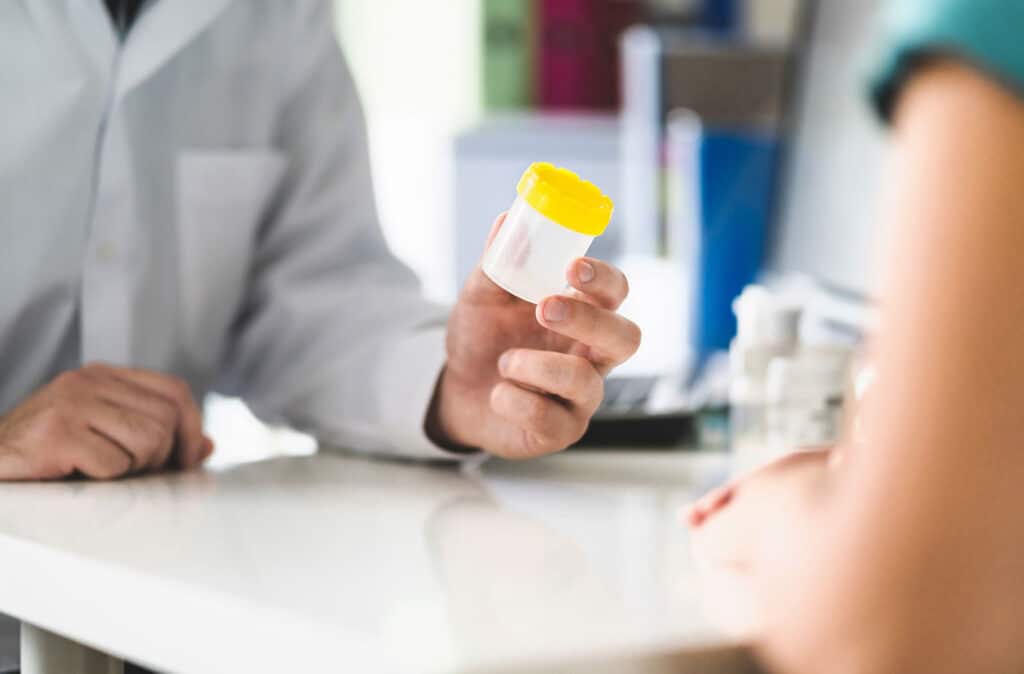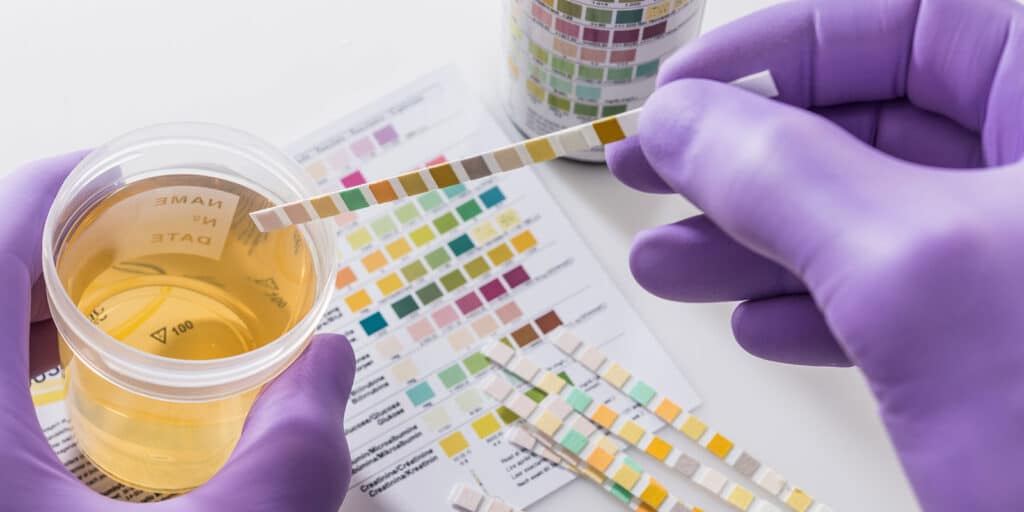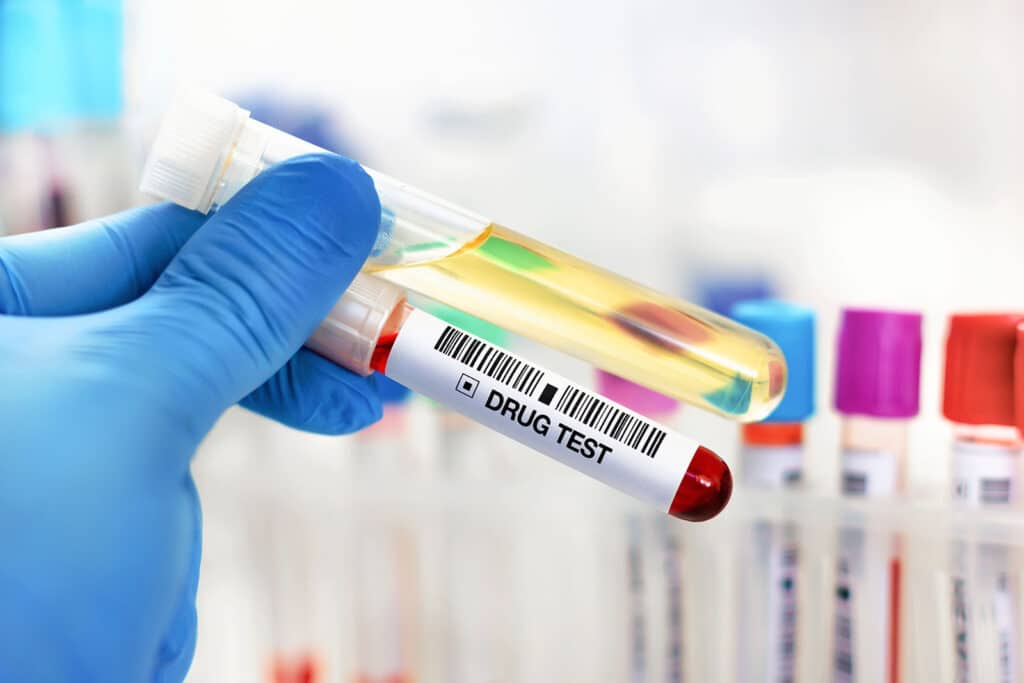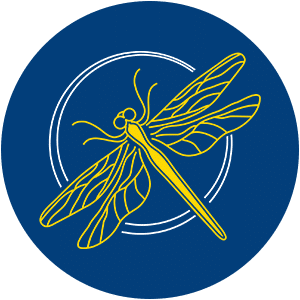The detection window of a standard 5-panel drug test ranges between a few hours and up to three months!
Why is the window so lengthy, and what determines my test’s detection period?
In this article, we’ll answer these questions. Read on to find out how far back a 5-panel drug test goes.
Table of Contents
- The Must-Know Information About 5-Panel Drug Tests
- What Drugs Show Up on a 5-Panel Screening Test?
- Does a 5-Panel Drug Test Detect Alcohol?
- How Far Back Does a 5-Panel Drug Test Go? An In-depth Look
- How to Prepare for The Five-Panel Drug Detection Tests?
- Does Your Addiction Threaten Your Career? We Can Help!
- References
The Must-Know Information About 5-Panel Drug Tests
Every drug test contains different panels, each representing one drug being tested. Still, the five-panel test is considered the standard that most employers and government agencies use.

It’s usually a part of the background check employers require from their job candidates. This test is especially vital for positions related to the Department of Transportation (DOT).
Some employers may also conduct random drug testing on existing employees from one time to another.
Here’s how the test goes:
Technicians perform the test by taking a saliva, hair, blood or urine sample from the person and analyzing it.
The drug test results become available within 3 to 5 days, depending on the service provider.
A “positive” result indicates that the tested person uses drugs. If the results are “negative,” though, the test indicates that the person is drug-free.
That said, the results might show a “false positive” in rare cases. This happens when the person’s body contains medications with chemicals similar in properties to the tested drugs.
What Drugs Show Up on a 5-Panel Screening Test?
The 5-panel test screens for the following five commonly abused substances in the provided sample:
| Substance | Detectable form |
| Opiates | heroin, morphine, oxymorphone, hydrocodone, codeine, and oxycodone metabolites |
| Phencyclidine | PCP |
| Cocaine | benzoylecgonine metabolite |
| Amphetamines | methamphetamine and amphetamine metabolites |
| Marijuana | THC compound |
Does a 5-Panel Drug Test Detect Alcohol?
Alcohol testing isn’t part of five-panel drug tests. The test only screens for the five substances mentioned above.

However, most drug testing services offer employers an option to include a separate alcohol use test with the 5-panel drug screening.
These alcohol screening analyses usually use urine, breath and blood ethanol testing methods.
How Far Back Does a 5-Panel Drug Test Go? An In-depth Look
The detection window of a panel drug test varies dramatically with the following three factors make that variance:
- The test sample type
- The type of abused drug
- Frequency of use
Here’s a real example:
Occasional smoking of marijuana might not show a detectable THC in the test sample after only a couple of days.
Conversely, smoking cannabis heavily can lead to a detectable THC in the blood for weeks.
With that said, let’s take a look at the average time a drug can stay detectable in different types of drug tests.
The Detection Window for Urine Tests
Urine tests are the most commonly used drug screening option, and they can only detect drug use in the short term, ten days max (except for Phencyclidine)

Here are the approximate durations different drugs can be detectable in a urine test sample:
| Substance | Detection time frame |
| Opiates | 2-3 days |
| Cocaine | 2-4 days |
| Marijuana | 2-7 days for light & moderate smokersUp to 15 days for daily smokersUp to 4 weeks for chronic smokers |
| Amphetamines | 2 days |
| Phencyclidine | 8 days for moderate usersAround 30 days for chronic users |
The Detection Window for Hair Drug Tests
Hair strand drug testing offers a significantly longer detection window than urine tests. It can detect drugs for a duration of up to three months after the last use.
But why does a hair test go much further back than a urine one?
When a person consumes a certain drug, it enters the bloodstream and becomes part of the hair cells within a short time.
Because the hair growth cycle and changes are considerably slow, the substance remains in the hair for weeks and even months.
That’s why a hair sample is the best option to detect repetitive drug use patterns.
The Detection Window for Saliva and Blood Tests
Although less common, saliva and blood screening tests are used to detect substance use.
The reason for being less frequently used is that these drug tests can’t detect drugs consumed more than four days earlier.

Given that, the following is the average time frame the substance can be detectable in saliva and blood samples:
| Substance | Saliva | Blood |
| Opiates | Up to 4 days | For 24 hours |
| Cocaine | Up to 3 days | 1-2 days |
| Marijuana | For 24 hours | Up to 14 days |
| Amphetamines | Between 1 and 2 days | Less than 12 hours |
| Phencyclidine | 1-3 days | 1-4 hours |
How to Prepare for The Five-Panel Drug Detection Tests?
Following some preparation tips before undergoing a five-panel drug test makes the process easier and prevents the need for repeating the analysis.
We’ve compiled the following most important preparation steps to help you with that:
Preparing for a 5-Panel Urine Drug Test
Keep these tips in mind when preparing for your next analysis:
- Avoid using tobacco or eating half an hour before the test.
- Stay hydrated around the time of the test. Try to consume around 8 ounces of water half an hour before providing the sample.
- Provide the sample in a clean container.
Preparing for a Hair Test
These two pieces of advice will help you be ready for a hair drug test:
- Avoid overusing styling products a few days before undergoing the test.
- Don’t choose damaged hair strands for the analysis because the lab will likely reject them.
Preparing For a Saliva Test
Try to follow these couple of tips for a successful saliva drug test:
- Drink a considerable amount of water on the test day. You’re allowed to consume water until 10 minutes before providing the sample.
- Don’t eat, drink, chew gum, smoke, sniff, or cough for half an hour before the test.
Does Your Addiction Threaten Your Career? We Can Help!
Substance abuse can devastate one’s job and even their entire professional life. It can deteriorate their performance and increase avoidable work errors.

An employed person may be at risk of being fired if they undergo a random workplace drug test because of a reasonable suspicion from the employer.
Not to mention that you can’t apply for any job that includes drug testing requirements.
Do you relate to these issues? Don’t worry; you still have a chance to save your career and income source.
With Illinois Recovery Center, you can take actionable steps toward recovery now. Our healthcare professionals will design a science-backed addiction treatment program tailored to your needs and condition.
They’ll also give you guidance and support in each step of the recovery process.
Suffering from dependence on opioids, angel dust, or any other substance? We offer top-notch treatment for all addiction conditions.
Contact us now, and let’s break addiction’s chains.
References
- https://www.uschamber.com/co/run/human-resources/guide-to-background-checks-drug-testing
- https://www.testing.com/tests/opioid-drug-test
- https://www.urmc.rochester.edu/encyclopedia/content.aspx?contenttypeid=167&contentid=amphetamine_urine_screen
- https://www.healthline.com/health/how-long-does-weed-stay-in-your-system#test-type
- https://www.healthline.com/health/hair-follicle-drug-test
- https://interclinical.com.au/htma-pathology/how-to-take-a-hair-sample



